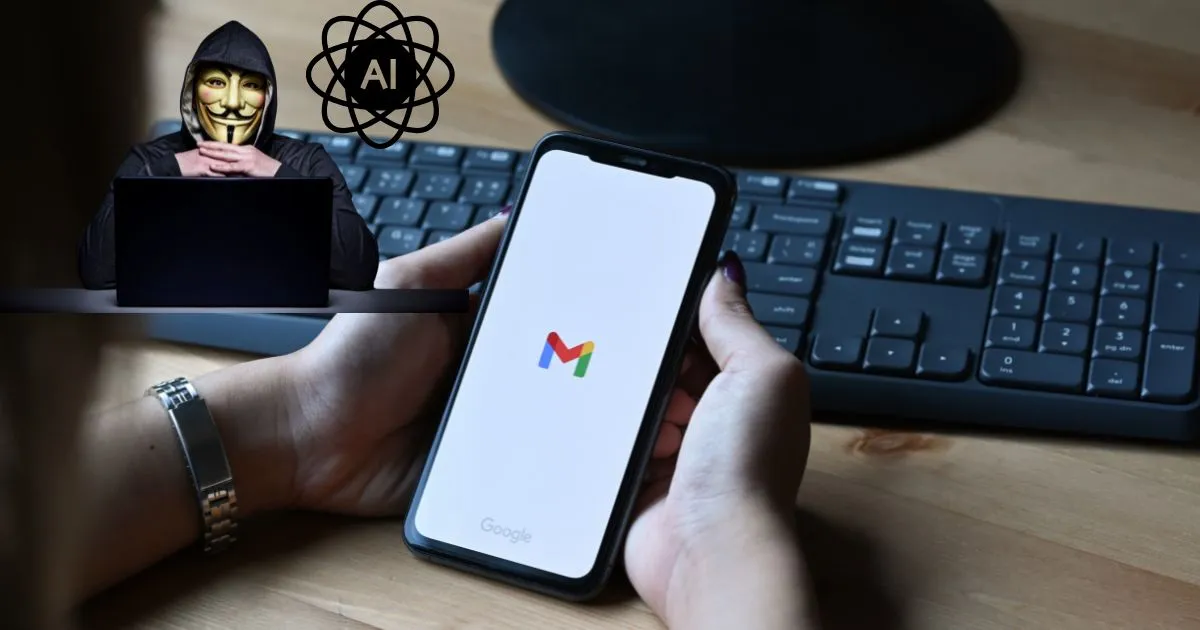Gmail Under Attack: How Hackers Use AI to Outsmart Users and Businesses
AI-powered phishing attacks are becoming one of the biggest cyber threats in 2025. If you’re a Gmail user or run a business, you could be the next target. Today’s cybercriminals are leveraging artificial intelligence to craft emails so realistic, they easily bypass traditional security systems and trick even the most cautious users.
👉 These aren’t your typical phishing scams. We’re talking about highly personalized, grammatically flawless, and psychologically manipulative emails that adapt based on your behavior, job title, or recent online activity. If you’ve ever thought, “I’d never fall for a scam,” think again — because AI doesn’t play fair.
Let’s dive in 👇
Table of Contents
The Perfect Scam — Now Supercharged by AI
Imagine opening your Gmail and seeing an urgent email from your bank. It has your name, your recent transaction history, and even your signature tone of writing. Looks real, right? Well, it’s not. It’s an AI-generated phishing email designed to fool you. And it probably will — unless you know what to look for.
Artificial Intelligence has become a double-edged sword. While it offers incredible innovations, hackers are now weaponizing it to launch ultra-personalized, near-undetectable phishing attacks. If you’re a Gmail user or running a business, this new wave of cybercrime concerns you directly.
In this article, you’ll discover how AI-powered phishing works, why Gmail is being targeted, and what practical steps you can take today to protect yourself and your organization.
1. The Rise of AI-Powered Phishing: Why It’s So Dangerous
Traditional phishing relied on poorly written emails and generic messages. But AI has changed the game. Now, hackers use tools like ChatGPT or custom LLMs (Large Language Models) to craft emails that:
- Use flawless grammar and formatting
- Include your name and personal context
- Mimic the tone of someone you know
- Adapt to your language or behavior
AI scrapes public data, social media, and even previously leaked credentials to make emails feel incredibly real. These emails no longer shout “scam” — they whisper trust.
2. Why Gmail Is in the Crosshairs
With over 1.8 billion active users, Gmail is a goldmine for cybercriminals. Here’s why they target Gmail specifically:
- Massive user base: More users means more potential victims.
- Integration with other services: Gmail links to Drive, Docs, Calendar, and Workspace. A breach in Gmail can mean access to your entire digital life.
- Business usage: Many small and mid-sized companies use Gmail for work. One hacked email can lead to financial loss or data leaks.
- People trust Google: If an email looks like it’s from Google, most users won’t question it.
3. How Hackers Are Outsmarting You with AI
Here’s how AI helps cybercriminals craft perfect phishing attacks:
- Data Mining: AI scans public profiles, job titles, and social media to create a digital profile of you.
- Email Mimicry: AI tools replicate the writing style of your boss or colleague.
- Voice Phishing (Vishing): With deepfake audio tools, attackers can even simulate phone calls.
- Chatbots for Real-Time Interaction: AI-powered bots respond in real time to your replies, guiding you into giving up credentials or clicking malicious links.
These tactics make traditional “phishing detection” tools obsolete.
4. Real-World Examples of AI Phishing in Action
- Case 1: Fake Google Security Alert You receive a perfectly styled email warning you of a suspicious sign-in attempt. It urges you to reset your password. The page looks exactly like Google’s — but it’s not.
- Case 2: Invoice Scam for Businesses Your finance department receives an invoice from a known supplier. It has the correct PO number and product list — generated from past email threads. One click, and malware is deployed.
These examples show how AI makes attacks personalized and dangerously believable.
5. How to Protect Yourself and Your Business
You don’t have to be a cybersecurity expert to stay safe. Here’s what you can do right now:
For Individuals:
- Enable Two-Factor Authentication (2FA): This adds a second layer of security.
- Use a Password Manager: It prevents you from reusing passwords across services.
- Check Email Headers: Look at the sender’s email domain closely.
- Never Click on Suspicious Links: Hover over the link to see the real URL.
For Businesses:
- Educate Your Team: Run phishing simulations and training.
- Use Email Gateways: These filter out malicious messages before they hit inboxes.
- Implement Zero Trust Policies: Assume breach and verify every access request.
- Monitor Logs and Activity: Use security tools to detect anomalies in Gmail activity.
6. The Role of Google: What Gmail Is Doing About It
Google is not sleeping on this threat. It uses machine learning to detect suspicious emails, scans for known malware, and alerts users to unusual activity. However, even Google admits that AI-generated phishing is harder to catch.
That means you are the last line of defense.
7. Final Thoughts: Stay Smart, Stay Safe
Cybercriminals are evolving, and so should you. AI has made phishing smarter — but your awareness can make you safer. Stay updated, stay skeptical, and remember: if something feels off, it probably is.
Don’t wait for a breach to act. Start protecting your Gmail account and your business today.
Frequently Asked Questions (FAQ)
How can I tell if an email is AI-generated?
AI-generated phishing emails are alarmingly convincing, often featuring flawless grammar, a natural tone, and even personal details like your job title or recent purchases. These emails may include hyper-personalized information, such as the names of colleagues or specific events, that seem too accurate, despite the sender being unknown. Look out for subtle inconsistencies in context, unusual urgency, or strange requests. Always verify the sender’s address, check for slight domain misspellings, and never click on links before hovering to inspect their real destination.
Is Gmail safe from phishing attacks?
While Gmail uses machine learning to detect phishing and spam, no email service is fully protected against AI-powered phishing attacks. These sophisticated emails can bypass traditional spam filters by mimicking human behavior and avoiding common spam triggers. To stay safe, it’s crucial to practice vigilance, verify email addresses, and enable security measures like two-factor authentication (2FA). Regular awareness of phishing risks significantly reduces exposure to these threats.
What should I do if I clicked a phishing link?
If you suspect you’ve clicked a phishing link, act quickly to minimize damage. Disconnect your device from the internet to stop further data transmission, then run a full antivirus scan. Change your passwords, beginning with your Gmail account, and enable two-factor authentication (2FA) for added protection. Report the phishing incident to Google and any relevant authorities or cybersecurity teams to help prevent further threats.
Can businesses fully prevent phishing attacks?
No cybersecurity strategy can guarantee full immunity from AI-powered phishing attacks. However, businesses can reduce their risk significantly with proactive measures. Train employees to recognize and report phishing emails, implement secure email gateways, and use AI-enhanced filtering systems to detect threats. A strong password policy, zero-trust security model, and constant monitoring of account activities further help prevent phishing attempts.
Are AI tools illegal to use for phishing?
Yes, using AI tools for phishing is illegal in most jurisdictions. Creating AI-generated content to impersonate individuals, steal credentials, or commit fraud constitutes cybercrime. Such actions can lead to severe penalties, including fines and imprisonment. Law enforcement agencies are intensifying efforts to target AI-powered cybercrimes, with cybercriminals being prosecuted under laws related to computer misuse and data protection.

